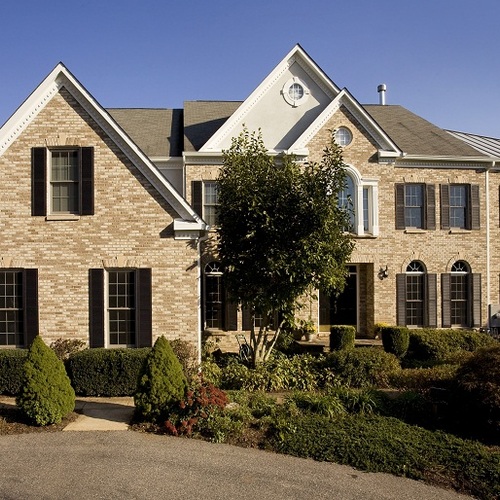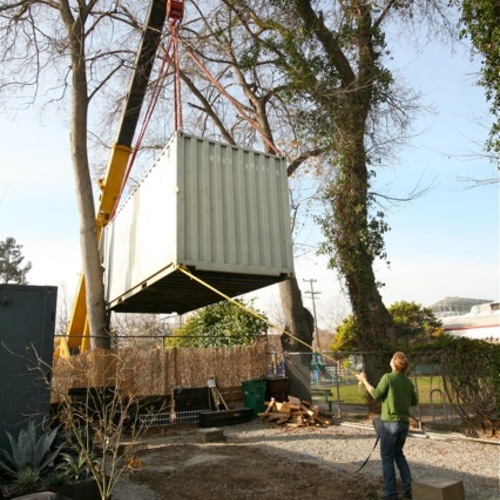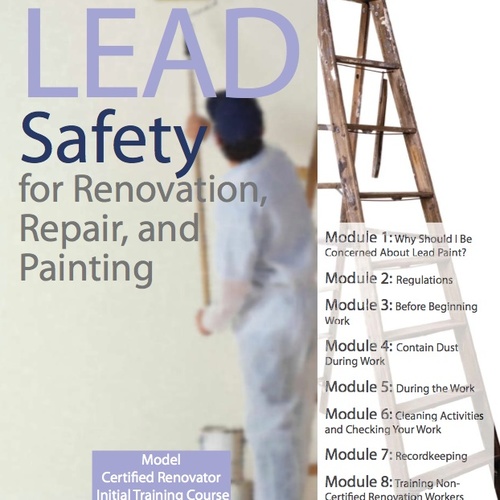
Image Credit: courtesy of Tommy Strong
When you’re talking about building and remodeling three words should be part of the conversation: Green, smart, and quality.
Some parts are up to consumers, some are up to us. We guide the discovery process and use a disciplined construction process to boost value whatever shade of green our clients aim for.
Despite the economic upheavals in the housing market, about 8 million new homes were built last year. And we’re building them greener than ever. That’s a good thing, but improving the existing housing stock will have a much greater affect on greening America than even gargantuan efforts taken on the new construction side.
Smart remodeling (and building) is ongoing, and the notions of green are simply the next step in construction evolution. As a production manager for a remodeling company, my primary task is doing my job efficiently, in smarter ways, with value added. I don’t care how you define green, as long as you let me build smart.
Green remodeling involves a balance of products and processes; there are two areas of opportunity to influence our client’s choices during the sales process, but we are limited by their level of understanding, desire, and commitment.
During the sales process we can influence product choices
We’ve been including a free duct blaster test as a part of high end remodels and this year we started offering energy audits. We look for opportunities to tie in envelope upgrades within the scope of the current and future remodel plans. For big energy wasters, we suggest fixing them regardless of the scope of work and clients never balk (would you balk at a mechanic who ignored severely worn tires because you hired him to change the oil?).
When gauging a client’s level of green, we start by showing them low-maintenance no-brainers like durable PEX plumbing systems and healthier paints. Making sure they see the obvious benefits is easy, and once they understand, then they become curious. We ask questions, exploring their living habits, and talking about water and energy conservation, we can find out if their wishes include better hot water delivery—if so, we steer them towards tankless water heaters—or super-efficient ceiling fans, in which case we point towards one rated as Energy Star. [Some follow up about desire]. Bath fans are another easy upgrade: they are bigger, badder, quieter, and more expensive than they used to be — and worth every penny. Sucking moist or stale air out is as important as circulating air for interior air quality.
To take it up a notch we’ll talk HVAC upgrades or spray-in insulation, both of which offer big benefits, but an additional level of up-front financial commitment (we are talking thousands of dollars here). For our clients committed to maximum efficiency we go beyond conservation and look towards contribution — think photovoltaic panels, solar water heaters, rain water collection, etc.
The main point is that by following their lead on budget items we can dial in on where to lead the conversation next. We look for opportunities to sell green building, and we want to be ready to take it as far as they want.
To go deep green, we need trade partners who are up to the task: suppliers who want to help install their products, engineers and designers who will specify them and fellow contractors who will take the ball and run with it. These specialists must know the products, or be willing to learn about them. We lean on them pretty heavily because we can’t be their technical expert, and we can’t spend all our time talking people in to a different (smarter) way of doing things.
During production (and demo) we are in control of the details**
Levels of commitment to the products vary wildly among clients, but our commitment to the process varies little. The tactics may change but strategies don’t. We keep consistent quality with durability and ‘best practices’ checklists learned from 17 years of remodeling. These standards and checklists help us stay focused on whatever we can do to tighten and refine the building envelope. Things like cladding, flashing, and drainage which are conditions begging for improvement. Advanced framing techniques that increase opportunity to add insulation and cut thermal transfer. Air flow management that controls temperature and humidity, and therefore, comfort.
Our systems and practices attempt to squeeze value from every square foot, no matter how many square feet there are. We do this by examining every inch of floor, wall and ceiling space for maximum benefit. Some value choices aren’t necessarily green per se, but they’re good design. For example: it often makes sense to thicken a bathroom or kitchen wall — plumbers and electricians like the extra room to work with utilities and fixtures; designers and architects like the extra room to play with things like built-ins and pocket doors. It costs a little more but the square foot of floor space is used well.
Our demolition approach is less like tear-out and more like surgery, with instruments and masks. The attitude is remove, re-cycle, and ReStore. Old aluminum window frames and copper supply lines don’t go to the dumpster; they go to the salvage yard. And many items we take out of a particular home can find another home somewhere else. Hardware, doors and windows, even commodes are in enough demand that the Habitat for Humanities of the world will come pick them up. And it means fewer trips to the dump for us.
Surgical demolition should be mapped out with a solid 3-point plan:
-
Isolate—reduce the impact of major renovations on the rest of the home by controlling security, traffic, and of course, dirt.
- Protect —go the extra mile, even if means 1/8 in. at a time: I’ve pulled 300’ of shoe molding so we could better protect a hardwood floor all the way to the baseboard.
- Remove — pay attention to negative air pressure and reduce dust for the people living there and the people working there.
The next big thing in the marketplace—no matter which marketplace—is always right around the corner. Despite the fog of economic uncertainty we know some things: gas, oil, and kilowatts won’t get cheaper. Quality construction is a concept that continues to evolve and we continue to roll with it. During a green remodeling project we elevate the quality and number of products whenever we can through education and options; through our processes, we maximize value no matter what selections are made. As we do, we make the best buildings we can, those that stand the test of time–the most valuable commodity we have.
Weekly Newsletter
Get building science and energy efficiency advice, plus special offers, in your inbox.















0 Comments
Log in or create an account to post a comment.
Sign up Log in